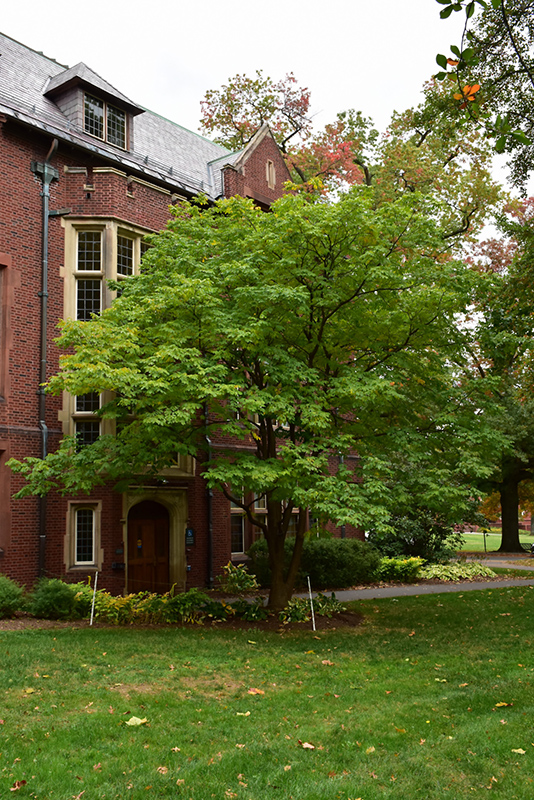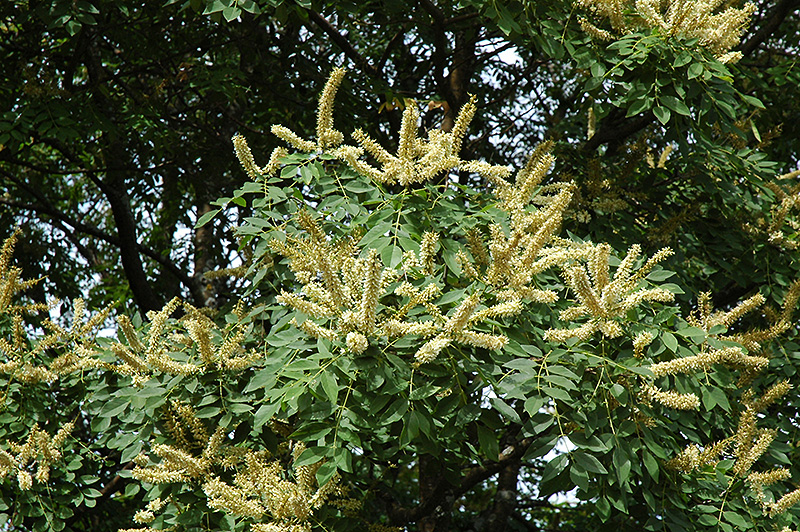Height: 25 feet Spread: 20 feet
Sunlight:
Hardiness Zone: 3a Description: An attractive and rare small tree with so much to offer - showy upright spikes of white flowers in mid-summer when few trees bloom followed by flat pods, ash-like foliage which emerges a fuzzy silver, and glowing golden bark; excellent for small yards Ornamental Features Maackia, Amur features showy spikes of fragrant creamy white pea-like flowers rising above the foliage in mid summer. It has attractive forest green deciduous foliage which emerges silver in spring. The pinnately compound leaves are highly ornamental but do not develop any appreciable fall color. However, the fruit can be messy in the landscape and may require occasional clean-up. The mottled olive green bark is extremely showy and adds significant winter interest. Landscape Attributes Maackia, Amur is a deciduous tree with a more or less rounded form. Its average texture blends into the landscape, but can be balanced by one or two finer or coarser trees or shrubs for an effective composition. This is a relatively low maintenance tree, and is best pruned in late winter once the threat of extreme cold has passed. It is a good choice for attracting bees to your yard, but is not particularly attractive to deer who tend to leave it alone in favor of tastier treats. It has no significant negative characteristics. Maackia, Amur is recommended for the following landscape applications; Planting & Growing Maackia, Amur will grow to be about 25 feet tall at maturity, with a spread of 20 feet. It has a high canopy of foliage that sits well above the ground, and is suitable for planting under power lines. As it matures, the lower branches of this tree can be strategically removed to create a high enough canopy to support unobstructed human traffic underneath. It grows at a slow rate, and under ideal conditions can be expected to live for 50 years or more. This tree does best in full sun to partial shade. It prefers to grow in average to moist conditions, and shouldn't be allowed to dry out. This plant should be periodically fertilized throughout the active growing season with a specially-formulated acidic fertilizer. It is not particular as to soil type or pH, and is able to handle environmental salt. It is somewhat tolerant of urban pollution. This species is not originally from North America, and parts of it are known to be toxic to humans and animals, so care should be exercised in planting it around children and pets.![]()
![]()
![]()
![]()
![]()
![]()
![]()
![]()
![]()
![]()
![]()
![]()


